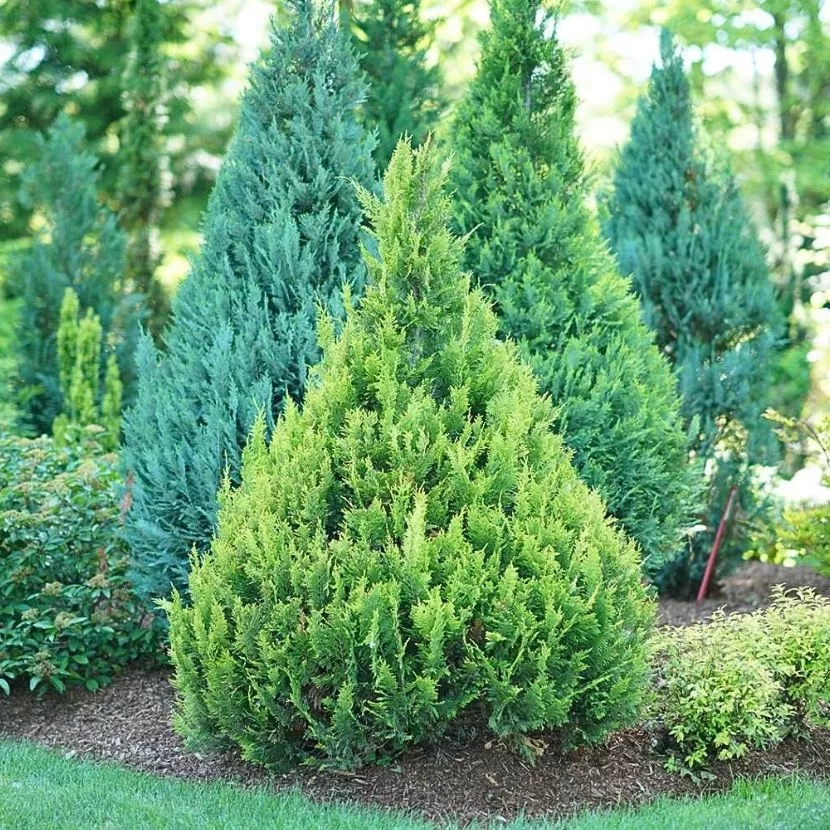A bay tree is one of the most famous evergreen shrubs, with dark-green foliage measuring 2-4 cm wide and growing up to 12 cm long. It can be grown as a patio depending on how its leaves are trimmed to create intriguing shapes. If you fancy spicy cuisines, its leaves make a great seasoning spice for all your cooking.
Bay tree which can also be referred to as sweet bay, bay laurel, and by its botanical name Laurus Nobilis, can be grown either in a container or directly in the ground in your garden. But why are bay trees popular? here are 5 reasons why they are among the most popular plants:
- Aesthetic appeal & versatility
- Culinary and medicinal uses
- A bay tree is an evergreen nature and also a wildlife attraction plant
- Easy to grow and maintain
- Great historical significance
Laurus Nobilis has a great value not only as a herb but with its aesthetic appeal, and culinary and medicinal benefits; you are set to gain immensely from planting the sweet laurel. Read on to decipher insights regarding the bay tree's popularity and uses.
Bay Tree Plants Have a Great Aesthetic Appeal
A bay tree has a classic and sleek appearance with its glossy, dark-green foliage and with densely compact growing habits. It can be easily used as a topiary, enabling you to shape it into various intriguing and attractive shapes, ranging from; pyramids, standards (tree-like), and hedges. Due to its versatility as a topiary plant, it creates an interesting touch and addition to any landscaping efforts or to your garden in general. When shaped properly, bay tree plants can be placed at the front door to add character to your entrance.

Despite having a huge amount of benefits, bay trees are not complicated plants to grow in any kind of setting and location. Whether in containers or in-ground gardens, with regulated watering and provision of recommended potting mix, they can easily grow to a height of 10-20 meters. Given its ease of growing, Laurus Nobilis is a versatile plant that can fit different spaces, based on your preference. Its compact size allows it to be grown in small gardens or patios, while also being a befitting choice for larger landscapes.
Culinary and Medicinal Uses
Bay tree leaves are rich in spices and are famous in Mediterranean dishes. Its leaves can be used either dried or fresh, depending on the type of cooking. For some, dried bay leaves are ideal due to less concentration of the bitter-tasting compounds. The taste and flavor of pasta dishes, soups or stews, grains, and roasted vegetables can be elevated with a touch of dried, fresh, or frozen bay tree leaves.
It is prudent to remove used leaves before serving the meals, mainly due to their sharp, and tough edges which can give you a negative experience. The combination of both the dried Laurus Nobilis berries and pressed bay leaf oil results in a flavorful spice. In addition to this, the bay tree wood can be burnt, and emanating smoke is a robust flavor for any cooking.
.jpg?1687448510769)
Bay leaves have been used in traditional medicine for centuries, mainly to remedy stomach gas, while also enhancing the digestion process. Extracts from the bay leaf can be a great relief for arthritis and rheumatism when gently rubbed in the affected areas. There are significant essential oils in bay tree leaves and also in its fruits rich in antibacterial, anti-inflammatory, and antioxidant properties. Additional, medicinal uses include; aromatherapy and herbal remedies for respiratory issues like; digestion, and relaxation.
Bay Tree Is an Evergreen in Nature
Formerly known as an evergreen shrub, bay trees retain their greenery all year long. Its withstanding dark-green foliage has made a bay tree plant desirable and popular over the years; adding texture and color to your garden throughout the year, even during winter.
.jpg?1687448757880)
Dense foliage which can be achieved after being trimmed to desired shapes offers privacy and acts as a windbreak. Furthermore, the fragrant flowers of a bay tree attract bees, butterflies, and other pollinators, contributing to the overall biodiversity of a garden. Birds find a good shelter under the ever-green bay tree foliage.
Great Historical Significance
Though many people always refer to the Greek mythology of Apollo and the nymph Daphne when talking about bay tree history and origin. The bay laurel is regarded as a relic of the laurel forests in the Mediterranean basin over 10,000 years ago. The forests disappeared, with a few laurel forests still remaining in the mountains of southern Spain, Nothern Syria, and Turkey. Drought-tolerant plants as considered remains which emerged after laurel forests deteriorated and the bay tree is one of them.
Greek mythology states that Daphne was turned into a bay tree according to her wishes in her escape to marry Apollo, whom she disregarded. Since Apollo did not achieve his mission of winning Daphne's heart, he instead wore bay tree leaves sprigs because that is how close he felt to the love of his life. Eventually, laurel wreaths were introduced into Pythia games to celebrate victory; Pythia games were always held in honor of Apollo, which made laurel wreaths a symbol of high status and victory.
.jpg?1687449178295)
Sweet bay and its leaves in particular have different meanings in different cultures; for Chinese, from a famous Chinese folklore. They believe that a huge bay tree is located on the moon and it represents the endless toils of a worker. In reference to the bible, Laurus Nobilis is portrayed as a symbol of posterity, while the Christian tradition sees the bay tree as a representation of the resurrection of Christ; simply because it was a victory over death.
Bay Tree Is Easy to Grow and Maintain
It is easy to grow a bay tree plant either in a container and also in a garden; it all boils down to what you want to do with the bay tree plant. Growing a bay tree as an indoor plant can be achieved by using a container with a relatively bigger space to accommodate its growth. Laurus Nobilis thrives well in well-drained soil and exposure to sunlight. Watering is crucial to the plant's growth and maturity; however, create effective watering intervals to avoid root rot and eventual death of the bay tree plant.
Due to its ease of growing, being a less-demanding herb, a bay tree can be effortlessly grown by experienced and novice gardeners. Apart from psyllid and less-frequent pests, bay tree plants in most cases are quite resistant a serious pest infestation. Laurel wilt, Phytophthora, and root rot due to excessive watering are some of the diseases commonly associated with bay tree plants.
.jpg?1687449779812)
Repotting of a bay tree grown in a container can be done after every two years during spring, making it a less costly and less-demanding herb to grow. Winter temperatures are detrimental to the plant, so move it to a garage or spaces with at least moderate temperatures to avoid root-freezing, which can slow its growth and subsequently kill the plant.
.jpg)



